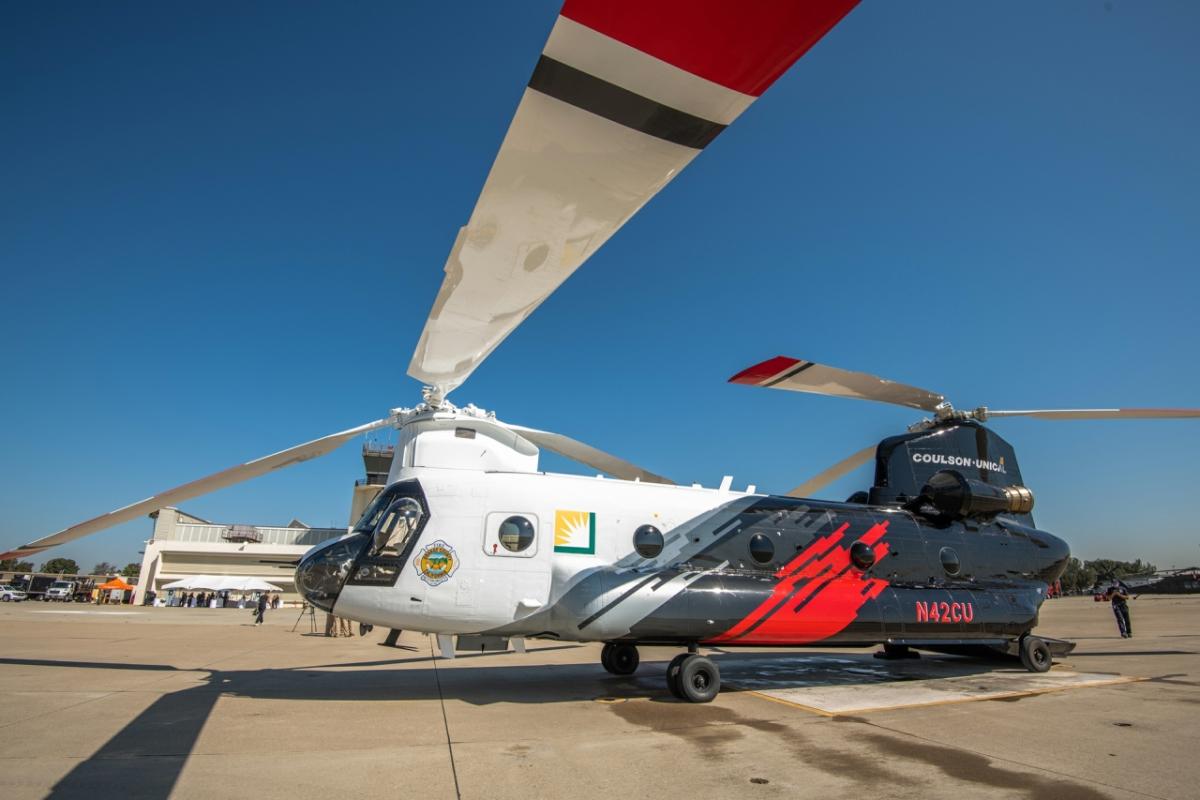Heavyweight Firefighting Aircraft Knocks Out Emerging Wildfires
First-year performance statistics prove SCE-funded helitankers’ unprecedented, round-the-clock capabilities to stop wildfires in their tracks.
By: David Song, Energized by Edison Writer and Roberto Lazarte, Energized by Edison Contributor
As Kyle Gordon drives past downtown Santa Barbara along a beautiful stretch of Highway 101, the Pacific Ocean beckons. Barely two months into his new job as a fire manager for Southern California Edison, he has been on the road for 36 days hopscotching a state peppered with hundreds of fires.
Gordon approaches Gaviota State Park and is amazed by the difference between the ocean view to his left and the Alisal Fire on his right.
“We have several critical power lines that are up near those mountains, and if the fire takes them out, it could mean power loss for many on the north coast of our service area, including Santa Barbara and Ventura,” said Gordon, who was an SCE production specialist for two years before shifting to fire management. “The firefighters had to jump on this fire quickly, or it was going to get out of hand.”
Before Gordon could reach the Ventura County Fire Department incident command post, he heard a now-familiar sound: the rhythmic thumping and atmospheric reverberations of the Quick Reaction Force. The airborne firefighting fleet consists of two Coulson-Unical CH-47 helitankers that can each carry up to 3,000 gallons of water or retardant; a Sikorsky-61 with a 1,000-gallon capacity; a Sikorsky-76 intelligence and recon helicopter, as well as a mobile retardant base that can actively mix up to 18,000 gallons of retardant per hour.
SCE contributed $18 million last year to lease the firefighting equipment in a partnership with the Orange County Fire Authority, Los Angeles County Fire Department and Ventura County Fire Department.
Newly released statistics show how prolific and valuable the helitankers were last year:
- A total of 1,836 drops on more than 50 separate fire incidents;
- 2,607,496 gallons of water (equal to 4½ Olympic-sized pools), 28% dropped at night; and
- 123,455 gallons of fire retardant, 19% dropped at night.
The nighttime performance is what stands out.
“The combination of night-flying capabilities — night hovering, night-time filling of retardant and dropping — is what is remarkable and unique,” said Troy Whitman, Gordon’s colleague at SCE and a 29-year veteran of fire management. “Taking the full extent of aerial firefighting and going nocturnal is unprecedented anywhere in the world.”
The Alisal Fire burned more than 16,000 acres but came to a relatively early end thanks partly to the work of the Quick Reaction Force’s graveyard shift.
“They were flying nonstop at night, working around the clock,” said Gordon. “They pretty much sealed the deal for that fire. It was like you were in a fight with a schoolyard bully, and your big brother just came in and knocked it out.”
Reports from the firefighters who fought the Alisal Fire concur.
“We found the QRF to be highly effective and a large contributor to the ground resources working the fire line at night,” wrote Chad Cook, assistant fire chief for Ventura County Fire Department and operations section chief of California Incident Management Team One, in a post-event report for the Alisal Fire. “Our operational ground resources felt the support of fire suppression activities yielded higher production rates.”
The French, Route, Tuna and Tumbleweed fires are all events that now stand out primarily for their interesting names, not widespread destruction, as a result of the helitanker team’s efforts.
“Climate change continues to affect the wildland fire environment in ways never before experienced,” said Orange County Fire Authority Chief Brian Fennessy, an early and consistent supporter of the utility-fire agency partnership. “Speed and force are key to successfully suppressing wildfires while small and before becoming mega fires. The QRF is the first of its kind 24/7 aerial task force and has changed the way fires are fought from the air.”
SCE’s 2022 Wildfire Mitigation Plan update calls for the continued support of regional fire agencies. Gordon and Whitman are thrilled that this partnership will continue.
“In years past, sometimes you felt helpless watching our brave wildland firefighters working so hard to push back and fight the destruction of wildfires,” said Whitman. “It’s so gratifying to be a part of new suppression capabilities that support and amplify the work they do on the ground.”
Gordon added, “I’m fortunate enough not to know my job without the QRF. It does not diminish the appreciation I have for the sound of heavy rotors cutting through the smoky air of a wildfire.”
For more information on SCE's wildfire safety efforts, visit edison.com/wildfire-safety.




